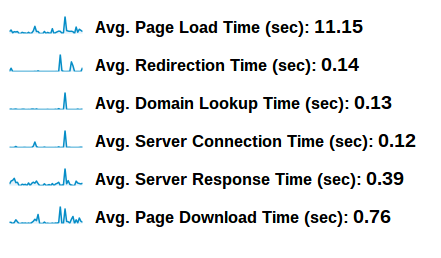When it comes to creating a landing page for your PPC campaign, we all know there are many different types of landing pages you can choose from with being micro-sites, lead capture pages, infomercial pages and so on. I am sure there are many many article out there on the internet telling advertisers ways to increase an advertiser’s pay per click campaign’s conversion rate. Seeing that the conversion rate is what most advertisers count the success of their campaign on, it can be deemed quite important. Therefore, lots of advertisers search for ways to improve their landing page to increase conversions. This may be from changing the design, adding elements, changing font size and content on the site and so on. However, while most advertisers optimise their landing page like a blogger optimises their website, they are not realising that one of the easiest ways to improve a campaign’s conversion rate is to reduce the site’s loading time.
You need to think that before the web user interacts with your landing page, they will need to have the patience to let the landing page load. Using Google Analytics on your landing page, you can see how long it takes, on average, for your landing to load.
As you can see, Google Analytics can tell you not only the loading time of your landing page but just about every other statistic too. The main statistic you should keep an eye on is the ‘Avg. Page Load Time’. This is the time taken for the page to load after gaining the domain look up. From the example above, it is at 11.15 seconds which is extremely high. Eleven seconds on the internet will sure enough bore web users encouraging them to click away and exit the landing page. My general rule for the loading time of websites is that if it is above 3-4 seconds, you will need to try to reduce it because the load time of your landing page will affect the number of conversions you get.
For example, many of your PPC traffic may have the potential to give you a successful conversion. However, if the landing page doesn’t load fast enough for them, they will click away which means you are paying for traffic that doesn’t even entering your landing page – not good.
Fear not though! There are ways you can reduce your landing page’s loading time:
- Shove <scripts> to the bottom of the page – The mains source of a slow load time is all the scripts such as adverts, bookmarking buttons and sidebar widgets. By placing some of the scripts at the bottom means the top of the website will load without having to load the scripts (you have moved to the bottom). Although this won’t affect the site’s overall loading time, it means the top of your website will load faster keeping your web user interested in your landing page.
- Clean up your HTML – Most bloggers will have about a second of wasting HTML on their website that is doing nothing to their website beneficial. This usually happens when bloggers optimise their HTML and forget to remove snippets of HTML. Every 6 months or so, it is a great idea to go through the whole of your landing page’s HTML and delete all of the unnecessary HTML that is doing nothing. This means your landing page has less HTML to load per web user.




You must be logged in to post a commentLogin